Craftsmen at Work
Craftsmen at Work - Taxidermist
Taxidermy is the practice of preserving, mounting, and displaying animals for artistic, educational, or scientific purposes. For hunters, taxidermists play an important part in the process of bringing your hunting memories to life. We have visited Danish taxidermist Mikkel Carlsen in his workshop.
It’s a cold and frosty January morning as we pull into the industrial business park in the southern part of Denmark.
Wedged in between lumber yards and small entrepreneur businesses, we find Mikkel Carlsen’s taxidermy workshop. Even though it doesn’t attract much attention from the outside, the narrative changes drastically as you enter through the front door.
We are greeted by an array of colourful birds of all types, sizes, and colours as soon as we set foot inside. As we walk down the hallway, shoulder mounts of almost every major deer species decorate the walls. Some of these mounts are made by Mikkel himself, others are collectibles from all over the world.
The faint smell of chemicals and airbrush paint becomes stronger as we approach the workshop located at the end of the hallway. If you were amazed by the welcome committee of taxidermized animals in the hallway, you are truly blown away as you step into the workshop itself. Trophy mounts at different stages of completion no matter where you turn your head, is a solid reminder that we have stepped into the workshop of one of the most renowned and esteemed taxidermists in Northern Europe.
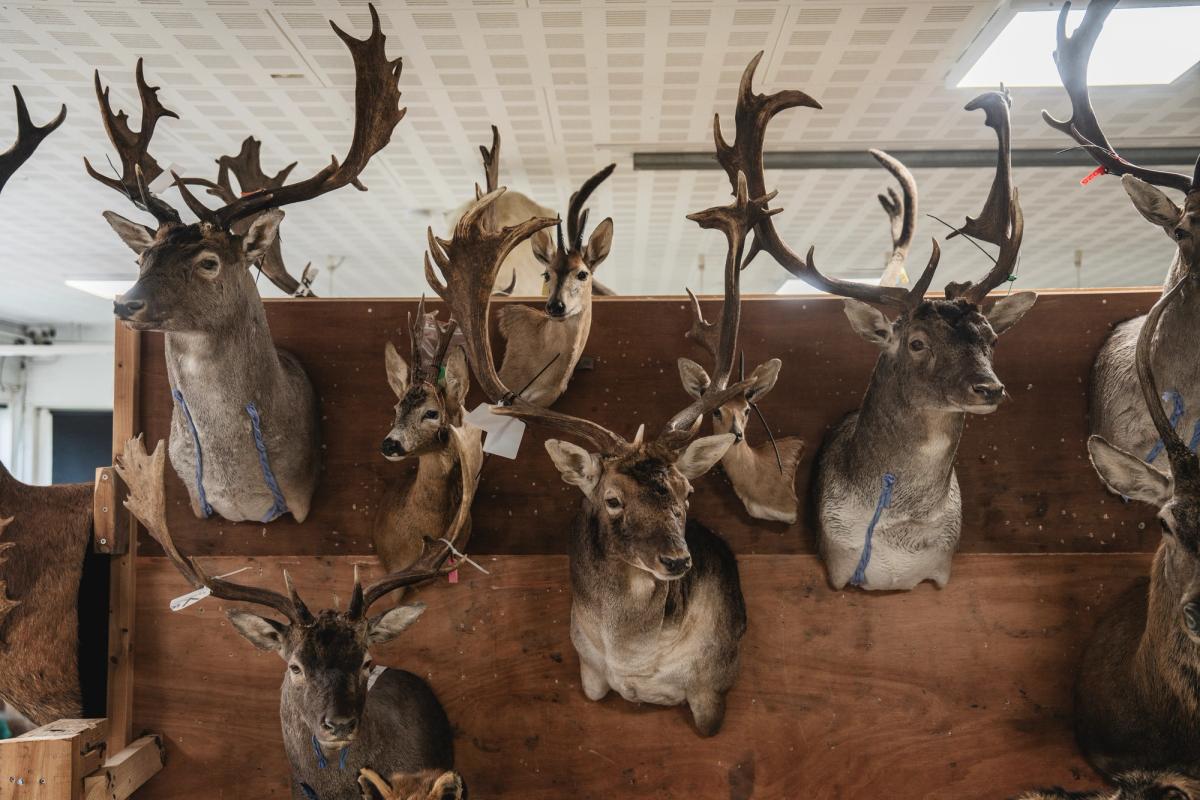
Carlsen began his journey in 1998 when he graduated as a taxidermist under the Danish Zoological Taxidermists' Association. Over the years, he has worked both as an employed conservator and as an independent professional, gaining more than 20 years of international experience in the field. According to Mikkel, taxidermy was always in the cards for him: “Ever since I can remember, I have always been fascinated by animals and nature in general.” A love and passion for animals and nature can lead to many career paths, but for Mikkel, the interest in taxidermy started quite early. “I was lucky to get a chance to help the local taxidermist when I was 16; that led to an apprenticeship, and I’m still here now.”
Mikkel is an avid hunter, and in between bringing other hunters’ memories to life, he still finds time to get out hunting and create some memories for himself. “Being a hunter myself, I really appreciate making peoples’ hunting memories into something they can look at and be reminded of a happy and maybe even thrilling experience. That really gives me a sense of enjoyment on their behalf,” Mikkel says, as we start to get ready for a tour of his workshop.
“This one just came in this morning,” Mikkel says as he leads us through the showroom to a workbench in the tannery in the room next door. On the table lies a beautiful white fallow buck that has been caped and prepared for delivery to the taxidermist. “Now we just need to free the head from the hide” he continues while he exchanges the blade on a scalpel for a fresh, sharp one. With surgical precision and tremendous speed, Mikkel frees the skull from the white fallow hide in a matter of minutes and starts prepping it for the tanning process. “This process has several steps and will take a couple of days, so it will be a little while before we start to shoulder mount this guy” Mikkel adds as he tidies up the workbench.
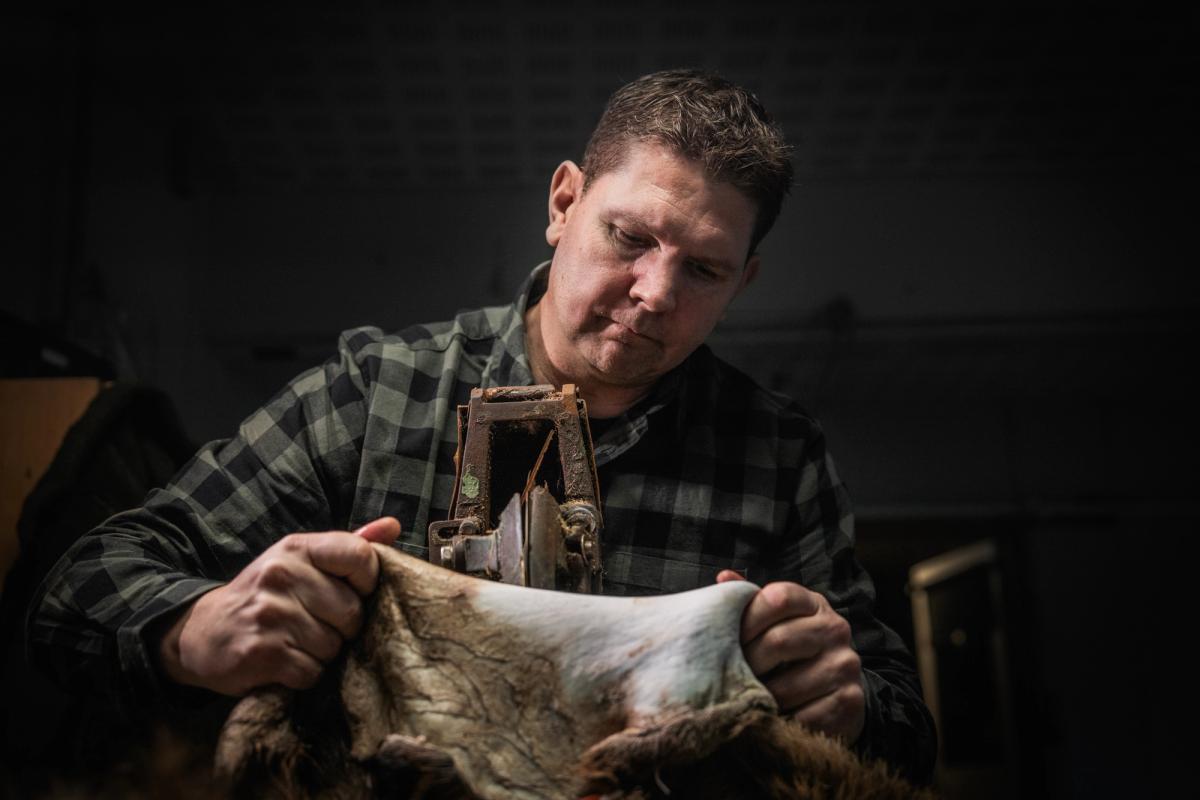
No matter where you look, you can always spot some sort of animal mount and every time we enter a new room something new catches our eye. Mikkel has gathered quite the collection over the years and even though the building is quite large, it is evident that he is starting to run out of room. “These ones I am particularly proud of” Mikkel says as he points to a cluster of birds of prey from all over the world on the top of a cupboard. Mikkel adds that he has always found the art of bird taxidermy very interesting and shares his fear that it is an art that might be forgotten down the road. “Less and less taxidermy trainees focus on learning special craftmanship that the birds require, they mostly focus on the mammals as that is where the money is to be found at the moment.”
Mikkel leads us to another workbench where he lays out a beautiful and highly colourful pheasant. Once again, the scalpel comes out to free the plumage from the carcass of the bird. Using a combination of the blade and his hands, aided by a little sawdust for added grip and friction, Mikkel makes short work of the process, which is completed within a couple of minutes with no tears or punctures. In this day and age, it is quite common to use molds, and standardized foam inserts for the body of bird mounts, but Mikkel likes to make the body the old-fashioned way using wood wool and string as he finds it much easier to represent the body size of the actual bird he is mounting and bringing the final mount even more to life.
As Mikkel ties the wetted wood shavings together with a thin white sewing thread, he elaborates on why he became a taxidermist: “Being able to immortalize people’s happy memories through my work is very rewarding. No matter if I am mounting a new hunter’s first pheasant or woodcock or a once-in-a-lifetime medal-class trophy for a seasoned hunter, I make mounts that will live on as memories for a very long time.”
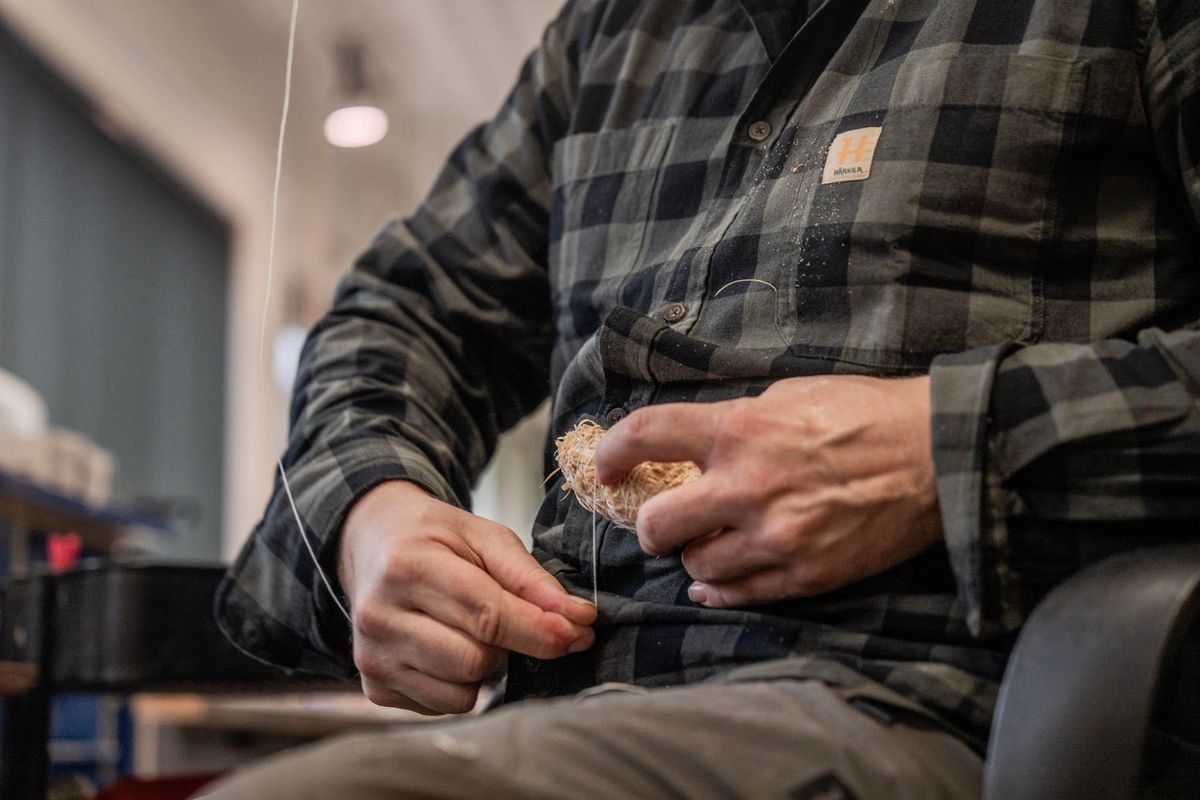
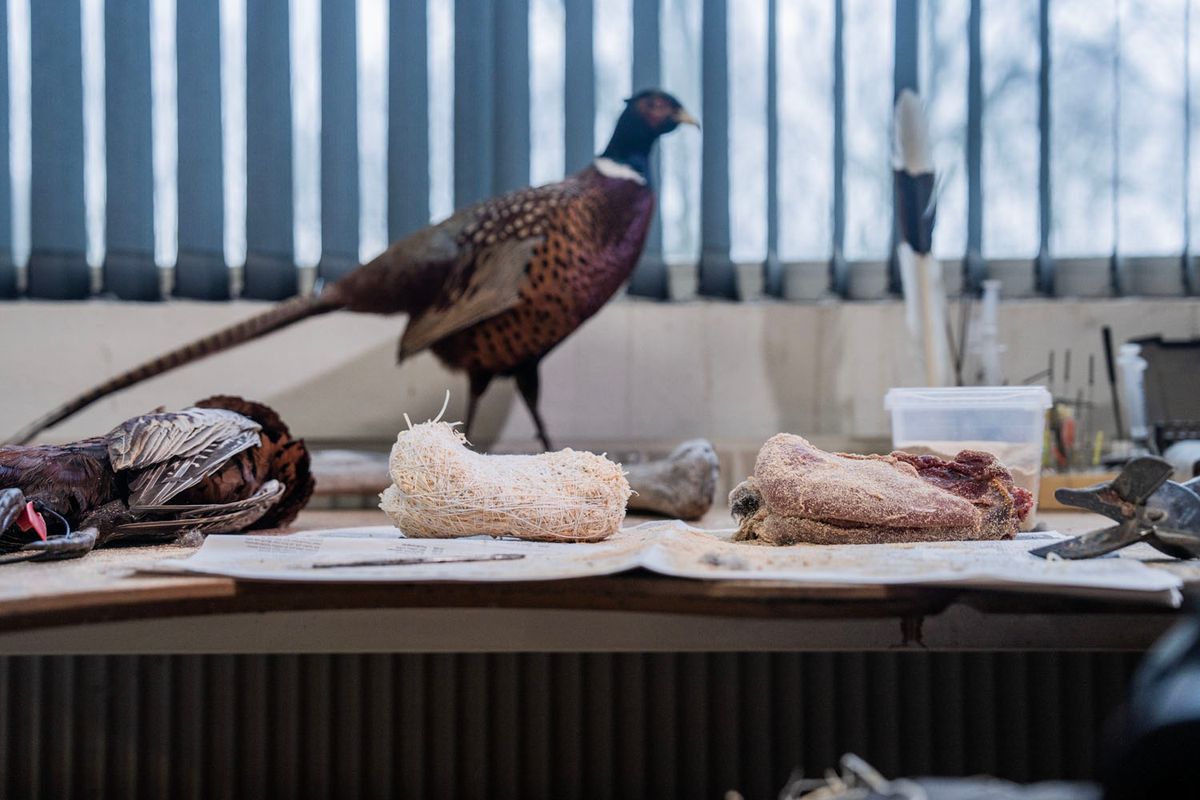
In the meantime, Mikkel has finished wrapping the new body for the pheasant mounts and as he puts it down next to the carcass, he just removed 10 minutes ago, it proves to be almost an exact replica. “This will make sure that the client receives the mount in the same size as he remembers his pheasant when he picked it up in the field, now we just need a nice piece of driftwood to mount it on.” We follow Mikkel outside and into a wooden shed filled, in the literal sense of the word, with driftwood of all shapes and sizes. “I go to northern Sweden once a year to collect driftwood for the mounts – mainly for the birds.” Mikkel tells us as he rummages around the container, looking for a piece of wood that matches in size and style to use as a base for the pheasant mount he started half an hour earlier. The annual trip to Sweden requires Mikkel to travel deep into the Scandinavian wilderness and follow the streams and rivers in search of driftwood that has washed ashore or piled up in the running waterways. “Sometimes, the client wants to pick out his own piece of driftwood for the mount and sometimes I pick a suitable stick - like this one,” Mikkel explains as he reaches for a stick on one of the shelves intended to separate the smaller pieces from the bigger ones.
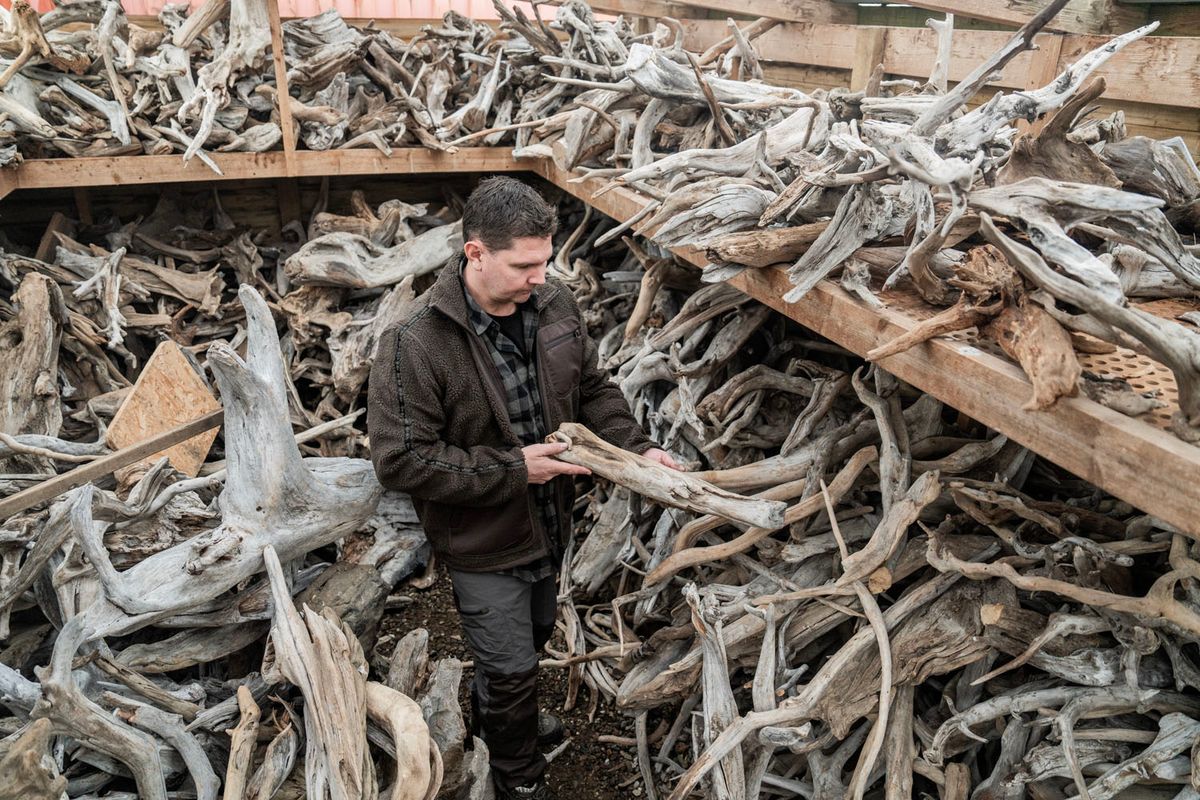
Today’s last order of business for Mikkel is to put the finishing touches on a red deer stag shoulder mount. Mikkel is prepping an airbrush tool while explaining the process he is about to start. “So, now we are colouring the muzzle and the details around the eyes, it’s a bit messy, but we can clean off the eyes with a cotton swab afterward and make them come to life again.” Slowly but surely, the airbrush starts to faintly add colour to the red stag’s head as we watch it come to life in front of our eyes. The difference is astonishing while simultaneously being almost incomprehensible if you don’t know what to look for. A fitting conclusion to a day that has highlighted just how much of an art form taxidermy actually is. The journey of an animal from the field to the wall can have many twists and turns, but the result is always a physical manifestation of a lasting memory that will make the experience last for a lifetime instead of a few minutes.